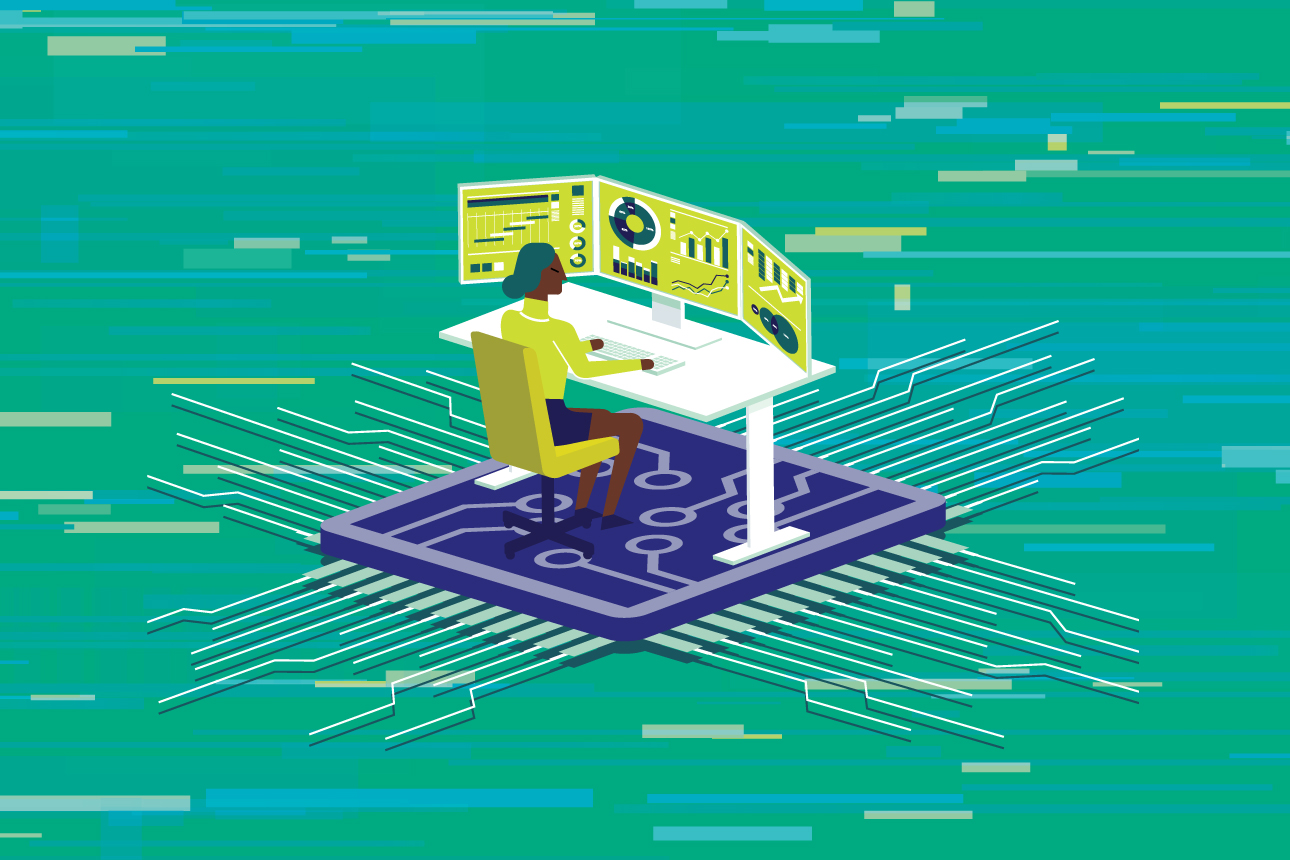Facing identical AI inputs, individuals make entirely different choices based on their own decision-making styles.

AI now has a firm footing in organizations’ strategic decision-making processes. Five years ago, less than 10% of large companies had adopted machine learning or other forms of AI, but today 80% of them make use of the technology.1 Whether it is Amazon integrating algorithms into its recruiting processes or Walmart using AI for decisions about product lines, such examples show that the use of AI now transcends mere process automation and that AI is increasingly being used to augment decision-making processes at all levels, including top management.2
In the boardroom, companies can use the power of AI to analyze information, recognize complex patterns, and even get advice on strategic issues. This predictive technology can help executives handle the increasing complexity of strategic choices by offering new perspectives and insights for consideration, which can help organizations gain competitive advantage.3
In AI-augmented decision processes, where algorithms provide suggestions and information, executives still have the final say. Salesforce, for example, uses its own AI program, called Einstein, to help leaders make important decisions in executive-level meetings. According to Salesforce’s visionary founder and CEO, Marc Benioff, the company’s decision-making processes have changed entirely since AI was introduced. Einstein’s guidance, whether on the performance of different regions or products or on new business opportunities, has helped to significantly reduce bias in meetings and decrease discussions driven by politics or personal agendas among members of the top management team.4
Our research reveals that this human filter makes all the difference in organizations’ AI-based decisions. Data analysis shows that there is no single, universal human response to AI. Quite the opposite: One of our most surprising findings is that individuals make entirely different choices based on identical AI inputs.
Moreover, these differences in AI-based decision-making have a direct financial effect on organizations. Depending on their particular decision-making style, some executives invest up to 18% more in important strategic initiatives based on identical AI advice. By understanding and using executives’ individual decision-making styles, then, organizations can better optimize the use of AI in their strategic initiatives and overcome flaws in human judgment.
How Executives Interact With AI
It’s possible for companies today to automate entire decision-making processes and autonomously substitute human involvement in the final choice through AI integration.
REFERENCES (9)
1. G. Bhaskar, P.R. Daugherty, H.J. Wilson, et al., “Taking a Systems Approach to Adopting AI,” Harvard Business Review, May 9, 2019, https://hbr.org.
2. S. Raisch and S. Krakowski, “Artificial Intelligence and Management: The Automation-Augmentation Paradox,” Academy of Management Review 46, no. 1 (January 2021): 192-210.
Comments